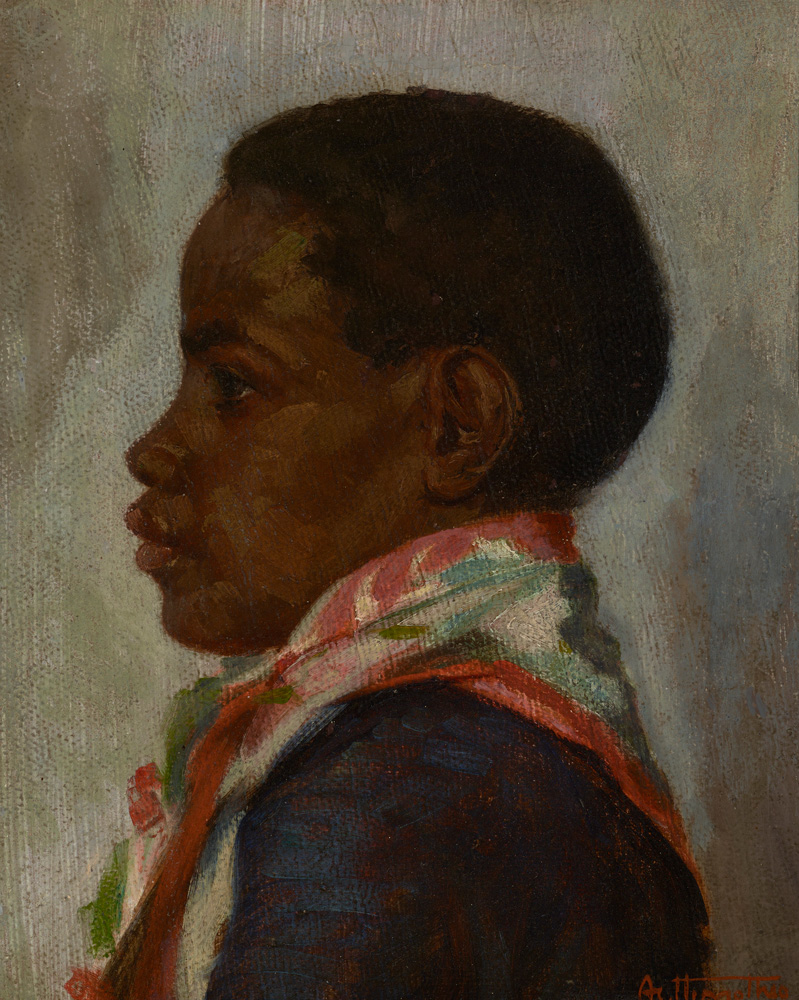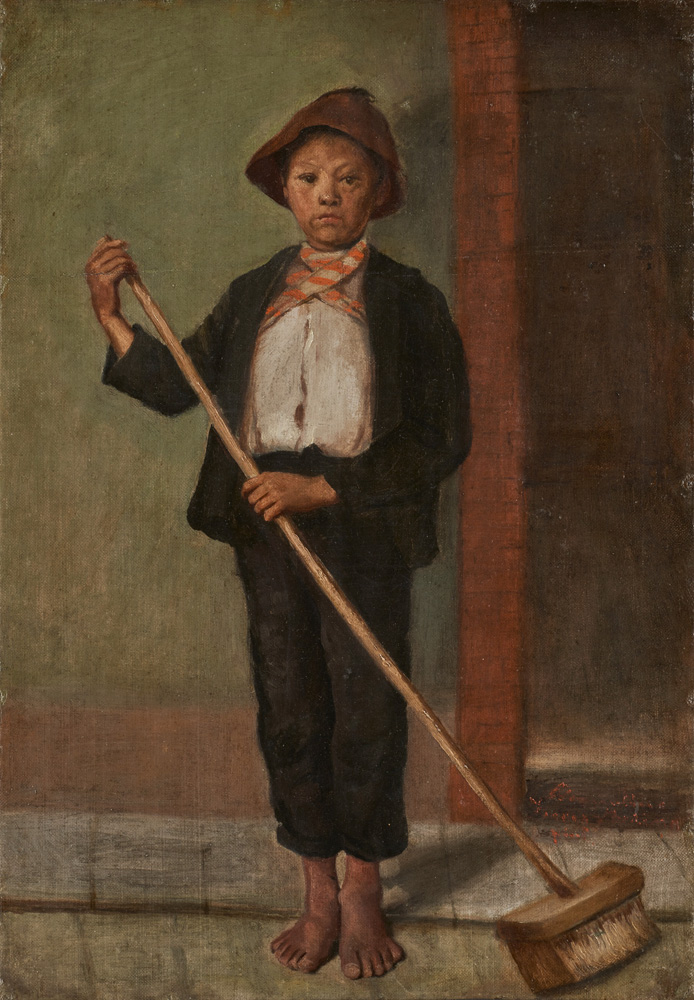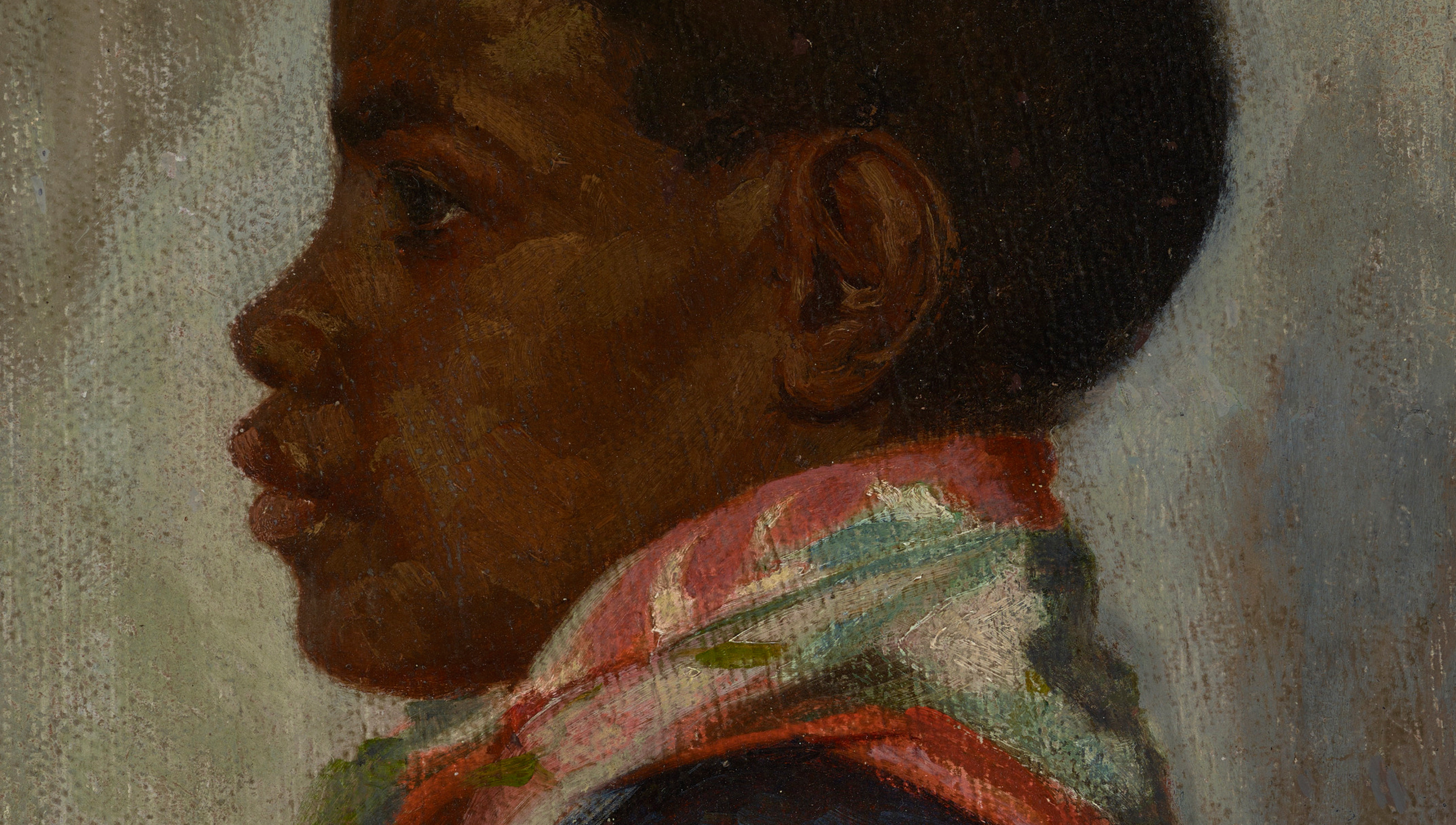The Denver Art Museum is the only institution in the United States with a permanent gallery exclusively devoted to Latin American art from the turn of the twentieth century. The two small paintings in the museum's collection discussed below, the only works by these artists in any American museum, showcase some of the artistic paradigms of this age of change and artistic experimentation. Interestingly, both are works by painters with promising careers that were cut short by mental illness.
The 1880s to the 1910s—just before the end of World War I—saw profound changes in Latin American painting. Gone were the last vestiges of colonial art centered on religious subjects and portraits of the elite. Also, the artists' workshops where the trade was passed from father to son became a thing of the past, phased out by art schools and academies where painters learned the trade. Artists became more informed of the latest artistic trends in Europe and were open to experimenting with new themes and visual repertoires often infused with nationalistic overtones. Picturesque places, ordinary people, and everyday objects became among the favorite subjects that focused the attention of artists. It was also a period in which public access to artworks greatly expanded because of the emergence of national and municipal museums across the region as well as country or city sponsored art salons.

Arthur Tímótheo da Costa, Portrait of a Boy, 1910s. Oil paint on canvas laid on French board; 15¾ × 13 in. Funds from Charles G. Patterson III, 2022.133.
Portrait of a Boy by Arthur Timótheo da Costa
Accessioned into the Latin American Art collection just last year, this portrait of a young boy of African descent, whose identity is now lost, was likely completed in the 1910s by the Brazilian artist Arthur Timótheo da Costa. Despite its modest size, there is much talent to admire. In contrast to other portraits by Timótheo da Costa in which sitters appear in lively and relaxed postures, the boy's side profile is static and formal, echoing the classical world. The face and the dress are skillfully constructed with small and fluid but precise brushstrokes. In sharp contrast, the background is more informal and abstract, closer to the style of the French Impressionists, demonstrating the artist’s knowledge of European artistic trends in vogue.
Timótheo da Costa was born in 1882 in Rio de Janeiro, Brazil, to a modest family of African descent. He began his art studies at a young age at the Brazilian Mint. Encouraged by the director of the mint, he enrolled at the National School of Fine Arts in 1894, together with his brother João, studying with some of the most prominent artists of Brazil. In addition, between the years 1895 and 1900, he learned stage design working as an assistant for the Italian designer Oreste Coliva.
The artist regularly exhibited at the Exposição Geral de Belas Artes (General Exhibition of the Fine Arts). Thanks to a travel grant he was able to spend nearly two years in Paris (1908–10), then the art capital of the world. A year later, in 1911, he visited Italy with his brother João to work on the decoration of the Brazilian pavilion at the Turin International Exposition of that year. Timótheo da Costa’s career, including his European experiences, was exceptional, particularly if we consider the difficulties, and race and class prejudices that an artist of African descent had to face in the last country to abolish slavery in the Americas (1888). Still, he had a remarkable career exhibiting his works regularly until his mental health rapidly declined in the early 1920s. He died in a mental asylum on October 5, 1922.

Fídolo Alfonso González Camargo, Boy with Broom, about 1914. Oil paint on canvas; 18¾ × 13 in. Gift of the Stapleton Foundation of Latin American Colonial Art, made possible by the Renchard family, 1990.542.
Boy with Broom by Fídolo Alfonso González Camargo
Fídolo Alfonso González Camargo was born in 1883 in Bogotá. He began his art studies in 1902 at the Escuela de Bellas Artes (School of Fine Arts) in Bogotá, where later he taught painting between 1910 and 1921. Between 1910 and 1919, he participated in several painting exhibitions, receiving an honorable mention for La poda (The Pruning), a painting he presented at the National Exhibition of Fine Arts organized to celebrate the Centenary of the Independence of Colombia in 1910.
The sudden death of his mother and one of his sisters within a few days of each other in 1921 deeply affected the artist and he suffered a nervous breakdown, which ended his artistic career. He remained secluded at home, cared for by another one of his sisters until the mid-1930s when he was admitted into the Sibaté mental asylum, where he died in 1942.
In contrast to many of his contemporaries who traveled to Europe to further advance their education, González Camargo never left his native Bogotá. His world was confined to the city where he was born and, above all, to the characters of his everyday world. He was particularly interested in the so-called chinos (street children) in the Bogotá slang of the turn of the twentieth century. A little mischievous, sometimes little thieves, working as newspaper sellers, shoe shiners, and errand boys, and willing to work in any menial job to earn some money to survive, the "chinos" were a central part of city life. They were always wandering the streets, seeking shelter in a church doorway, under a bridge, or anywhere to take refuge from the cold and rain.
Daniel Casey Stapleton acquired this portrait of a Bogotá "chino" holding a broom, now in the museum's collection, while living in South America between 1892 and 1918. Only marginally larger than Portrait of a Boy, González Camargo’s painting is more than a simple portrait of a child. It represents the universe and misery of Bogota's street children—boys that lived alone, or organized in small gangs, orphaned or abandoned, losing their childhoods at a very young age to learn how to survive the harsh world of a capital city.
The artist presents us with the almost heroic figure of a child street sweeper standing against a green wall at the side of a doorway. He is barefoot in a city that is almost always cold and rainy. The boy wears dark cloth pants rolled up, perhaps to avoid getting them wet. He is wearing a white shirt, somewhat large, a coarse coat, a scarf with crimson stripes, and a cap that completes the outfit. He holds in his hands a broom, his work tool. He looks like a small soldier who goes to the daily struggle for survival, with a broom instead of a rifle. Gonzalez Camargo creates the child's face with painstaking detail—a little dirty, a little scared, and a little sad. It’s the face of someone who has seen the harshness and cruelty of the street from an early age. With profound respect and sensitivity, the artist manages to capture the intimacy and psychology of this apparently minor character who is nevertheless representative of one of the most disadvantaged social categories of a city in constant change.
Timótheo da Costa’s painting of a Black boy and González Camargo’s depiction of a Bogotá street boy beautifully dialogue with each other, documenting the lives of young individuals from marginalized communities. Portrait of a Boy highlights the presence of the African diaspora in Latin America, often severely overlooked in Western art history. In contrast, Boy with Broom’s depiction draws attention to poverty and child exploitation. Both paintings illustrate the complex and diverse experiences of young people from disenfranchised groups historically excluded from mainstream narratives.
Similarly, the artists' lives and personal experiences enable the museum to encourage meaningful conversations about the historical and contemporary relevance of mental health awareness on a global scale. Both artists faced their own internal struggles, and their artworks reflect the emotional complexities of their experiences during a time with limited scientific understanding and resources compounded by the daily struggles of minority groups. By exhibiting their works and highlighting the realities of their lives and careers, we hope to create a space where visitors can safely explore experiences that may reflect their own and expand their awareness of the struggles of marginalized communities. These portraits are not skillfully executed compositions for passive contemplation; the context of the creators and subjects represented highlight the intersectionality of identity and celebrate real stories too often neglected.

